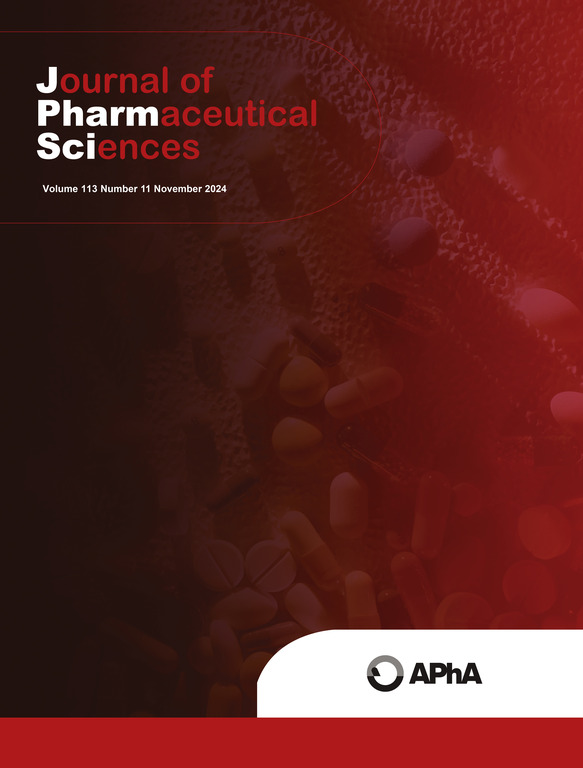An unexpected degradation pathway of N-hydroxy-5-methylfuran-2-sulfonamide (BMS-986231), a pH sensitive prodrug of HNO, in a prototype formulation solution
IF 3.7
3区 医学
Q2 CHEMISTRY, MEDICINAL
引用次数: 0
Abstract
N-hydroxy-5-methylfuran-2-sulfonamide (BMS-986231, Cimlanod) was being developed as a pH-sensitive prodrug of HNO (nitroxyl) for the treatment of acute decompensated heart failure. During a stressed study of Cimlanod in a prototype formulation solution (pH 4.5) at 40°C, a predominant unknown degradant along with three previously identified degradants were observed. The unknown degradant was isolated from the stressed solution via preparative HPLC but totally decomposed during freeze-drying. LC-HRMS analysis of the isolated unknown degradant, prior to freeze-drying, revealed an empirical formula equivalent to the adduct of Cimlanod with SO2 even though SO2 was not added in the prototype formulation solution. The unknown degradant was synthesized from Cimlanod and DABSO ((1,4-diazabiscyclo[2,2,2]octane bis(sulfur dioxide) adduct) and isolated as a crystalline DABCO (1,4-diazabiscyclo[2,2,2]octane) salt for single crystal X-ray structure elucidation. The degradation of Cimlanod increased when the solution was exposed to air, as compared to N2 atmosphere. A plausible mechanism was postulated for the unexpected degradation pathway of Cimlanod. This study provided in-depth stability knowledge of Cimlanod, which will be beneficial to the subsequent stability indicating method development and validation as well as the registrational applications on the content and qualification of impurities in new drug products.
N-羟基-5-甲基呋喃-2-磺酰胺(BMS-986231)(一种对 pH 值敏感的 HNO 原药)在原型制剂溶液中的意外降解途径。
N-羟基-5-甲基呋喃-2-磺酰胺(BMS-986231,Cimlanod)是一种对 pH 值敏感的硝化氢原药,用于治疗急性失代偿性心力衰竭。在对 40°C 下原型制剂溶液(pH 值为 4.5)中的 Cimlanod 进行压力研究期间,观察到了一种主要的未知降解剂和三种先前确定的降解剂。通过制备型 HPLC 从受压溶液中分离出了未知降解剂,但在冷冻干燥过程中完全分解。对冷冻干燥前分离出的未知降解剂进行的 LC-HRMS 分析表明,尽管原型配方溶液中没有添加二氧化硫,但其经验公式相当于辛拉诺与二氧化硫的加合物。未知降解剂是由辛拉诺和 DABSO(1,4-二氮杂双环[2,2,2]辛烷二(二氧化硫)加合物)合成的,并分离出结晶的 DABCO(1,4-二氮杂双环[2,2,2]辛烷)盐,用于单晶 X 射线结构解析。与氮气环境相比,当溶液暴露在空气中时,辛辣诺的降解速度加快。研究人员推测了辛辣诺意外降解的合理机制。这项研究提供了关于辛辣诺稳定性的深入知识,有利于后续稳定性指示方法的开发和验证,以及新药中杂质含量和合格性的注册应用。
本文章由计算机程序翻译,如有差异,请以英文原文为准。
求助全文
约1分钟内获得全文
求助全文
来源期刊
CiteScore
7.30
自引率
13.20%
发文量
367
审稿时长
33 days
期刊介绍:
The Journal of Pharmaceutical Sciences will publish original research papers, original research notes, invited topical reviews (including Minireviews), and editorial commentary and news. The area of focus shall be concepts in basic pharmaceutical science and such topics as chemical processing of pharmaceuticals, including crystallization, lyophilization, chemical stability of drugs, pharmacokinetics, biopharmaceutics, pharmacodynamics, pro-drug developments, metabolic disposition of bioactive agents, dosage form design, protein-peptide chemistry and biotechnology specifically as these relate to pharmaceutical technology, and targeted drug delivery.

 求助内容:
求助内容: 应助结果提醒方式:
应助结果提醒方式:


